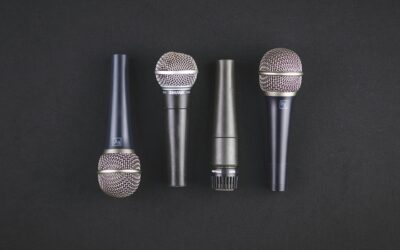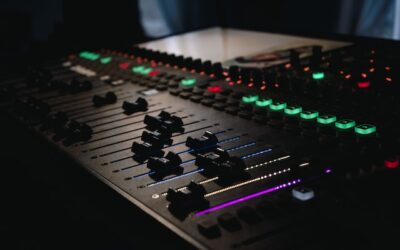Planning an event, whether it’s a corporate meeting, a conference, or a social gathering, often requires the use of audio-visual (AV) equipment. For those new to AV setup, the process can seem daunting. However, with the right guidance and tools, setting up AV equipment can be straightforward and stress-free. This guide will walk you through the basics of AV equipment and provide tips to ensure your event runs smoothly. To understand why the right AV equipment is so important for your events, read our article on Why Professional AV Equipment Can Make or Break Your Event.
Understanding AV Equipment Basics
What is AV Equipment?
AV equipment encompasses a wide range of devices used to create, display, and amplify audio and visual content. This can include projectors, screens, microphones, speakers, and more. Knowing the function of each piece of equipment is crucial to selecting the right tools for your event.
Common Types of AV Equipment
- Projectors and Screens: For displaying presentations, videos, images, and other multi-media.
- Microphones: Essential for ensuring speakers are heard clearly. Also a necessity for hybrid events to route audio from in-person presenters to virtual attendees.
- Speakers and Amplifiers: For amplifying sound in large spaces. Another necessity for hybrid events to route virtual speaker audio to in-person attendees.Mixers: Used to control audio levels from multiple sources.
- Lighting Equipment: Enhances visibility and ambiance.
- Cameras: Essential for recording, streaming, or incorporating virtual aspects of a hybrid event.
Essential AV Equipment for Beginners
For those just starting with AV setups, here’s a list of basic equipment that will cover most event needs:
- Projector and Screen: Choose a projector with sufficient lumens for the size of your venue and a screen that fits your display needs. BenQ provides a handy guide for everything you need to know about projectors.
- Microphone: A basic wired or wireless microphone will suffice for most speaking engagements.
- Speakers: A pair of quality speakers will ensure your audience can hear clearly.
- Cables and Connectors: HDMI, VGA, XLR, and other cables to connect your devices.
- Mixer: A simple audio mixer to balance sound levels if using multiple microphones or audio sources.
Step-by-Step Guide to Setting Up AV Equipment
Step 1: Plan Your Setup
Start by understanding the layout of your venue and the needs of your event. Determine the best locations for your screen, speakers, and microphones. Make sure there are adequate power outlets and that cables can be safely routed.
Step 2: Set Up the Projector and Screen
- Position the Screen: Place the screen where it will be visible to the entire audience.
- Mount the Projector: Ensure it is at the correct distance and height from the screen to produce a clear image.
- Connect the Projector: Use an HDMI or VGA cable to connect the projector to your laptop or media player.
Step 3: Set Up the Audio System
- Place the Speakers: Position speakers on either side of the screen or stage for balanced sound distribution.
- Connect the Microphone: Plug the microphone into the mixer or directly into the speaker if it has an integrated amplifier. It’s best to connect to the mixer to be able to adjust inbound and outbound levels from each microphone.
- Test Sound Levels: Use the mixer to adjust volume levels and ensure there is no feedback.
Step 4: Check Lighting
Ensure the lighting in the venue does not wash out the screen and that presenters are well-lit. Adjust or add lighting as necessary.
- Avoid Screen Washout: Ensure that lights are positioned so they don’t create glare or wash out the screen. Avoid placing lights directly in front of or above the screen.
- Illuminate Presenters: Make sure presenters are well-lit without casting harsh shadows. Proper lighting enhances visibility and engagement.
Ideal Lighting Setups: Three-Point Lighting
Three-point lighting is a standard technique used to achieve professional and balanced lighting. It consists of three main light sources:
- Key Light: The primary light source, usually placed at a 45-degree angle from the subject. It provides the main illumination and defines the subject’s features.
- Fill Light: Positioned opposite the key light, the fill light softens and reduces shadows created by the key light. It should be less intense than the key light.
- Back Light: Placed behind the subject, the back light helps to separate the subject from the background, adding depth and dimension.
To set up three-point lighting:
- Position the key light to one side of the presenter, angled down slightly.
- Place the fill light on the opposite side, at about the same height but with lower intensity.
- Set up the back light behind the presenter, aimed towards their back and head to create a subtle outline.
Step 5: Conduct a Test Run
Run through the entire setup to check for any issues with sound, visuals, or connectivity. Make adjustments as needed to ensure everything runs smoothly during the event.
Troubleshooting Common Issues
Even with careful planning, issues can arise. Here are some common problems and their solutions:
- No Sound from Speakers: Check connections, ensure the mixer is powered on, and verify volume levels with set level indicators.
- Projector Not Displaying: Confirm the projector is powered on, check cable connections, and ensure the source device is set to the correct output.
- Microphone Feedback: Adjust the position of the microphone and speakers, and reduce gain/fade levels on the mixer as necessary.
How FCCF Can Assist
At First Class, we understand the complexities involved in setting up and managing AV equipment for events. Our services include:
- Event Planning and Management: From initial concept to execution, we handle all aspects of event planning.
- AV Equipment Rentals: We provide high-quality AV equipment tailored to your event’s needs.
- Professional AV Technicians: Our skilled technicians are available to set up, monitor, and troubleshoot AV systems during your event.
For more information on how we can support your next event, visit our In-Person & Hybrid Events page.
Conclusion
Setting up AV equipment doesn’t have to be intimidating. With the right knowledge and preparation, you can ensure your event’s audio and visual elements are flawless. There are many guides available online and video tutorials with step-by-step instructions.
If you’re not sure where to begin and need some professional AV services, contact FCCF. We’re here to help make your event a success.



